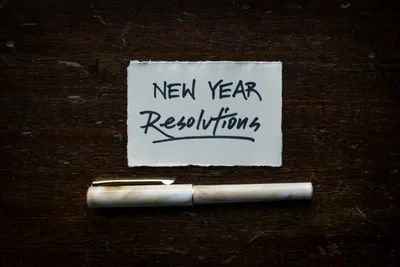
Why We Use Social Media When We Know It's Bad for Us
We all know the feeling. The hollow glow of the screen in a dark room, the thumb with a mind of its own, scrolling, scrolling, scrolling. We’ve all read the articles, seen the documentaries, and felt the creeping anxiety of comparison. We know, on a rational level, that spending hours on social media often leaves us feeling drained, distracted, and vaguely dissatisfied.
And yet, we keep coming back.
Why? If we know it’s not the best use of our time, why do we pour so much of it into these digital worlds? I believe it’s because we tell ourselves convenient stories to justify the habit. Let’s break down three of them.
The Social Smokescreen
The first idea sparked while I was watching old movies and noticed how everyone smoked constantly, making it look like a vital part of socializing. Decades ago, if you asked people why they smoked, many would have given you a social reason. It was a way to fit in, to look sophisticated, to have something to do with your hands at a party, to start a conversation. “Got a light?” was an invitation to connect.
Today, we hear the same arguments for social media. We say we need it to stay connected with friends, for professional networking, to know what’s going on in the world. It’s our digital “got a light?”—a tool for connection. But like the cigarette, it’s a connection wrapped in a harmful habit. It’s a smokescreen. It creates a superficial layer of social interaction while potentially damaging the very thing it claims to enhance: our genuine, deep-seated well-being.
The Attention Lottery
The next comparison hit me one evening while I was hours deep into a YouTube rabbit hole. An ad for the lottery came on, and I found myself scoffing, “Who even buys those things?” Then I immediately realized the irony of my own behavior.
Imagine social media as a lottery. You don’t pay with money. You pay with something far more valuable: your finite attention and your irreplaceable time.
Every time you scroll, you’re pulling the lever on a slot machine. Most of the time, you get nothing of value like ads or irrelevant content. But every now and then, you hit a small jackpot: a genuinely funny video, a ‘like’ from someone you admire, an interesting article, a message from an old friend. This unpredictable reward system, known as a variable reinforcement schedule, is what makes gambling so addictive. It’s the thrill of maybe this time that keeps us hooked, mindlessly feeding our attention into the machine in the hope of a payout.
We might look at someone spending their paycheck on lottery tickets and shake our heads. But how is that different from spending our entire evening scrolling, hoping for that one tiny hit of dopamine? Both are a gamble with a low probability of a truly meaningful return.
The Mind’s Mental Candy
This brings us to what I believe is the most fitting analogy, one that became clear when I was trying to cut sugar out of my diet. It was a daily struggle, yet during my athletic training, sugary gels were my main source of fuel. This contradiction is the perfect metaphor for social media.
Now, candy isn’t pure evil. It has its uses. For a marathon runner, a sugary gel can provide a critical, fast-acting burst of energy. Similarly, social media has legitimate, powerful applications. It can be an incredible tool for small businesses, a platform for vital social movements, or a genuine way for a deployed soldier to see their child’s birthday party.
But for most of us, most of the time, our consumption isn’t strategic. We aren’t athletes using sugar for peak performance. We’re just eating candy for breakfast, lunch, and dinner.
It’s delicious. It’s easy. It provides a quick, pleasurable hit. But it’s ultimately made of empty calories. It fills our time, but it doesn’t truly nourish us. It satisfies a momentary craving but leaves our minds undernourished and our long-term goals unattended.
We know there are more nourishing foods for our minds and souls: a deep conversation with a loved one, the focus of creative work, the quiet reflection of reading a book, the peace of a walk in nature. These are the proteins, the complex carbohydrates, the vitamins of a well-lived life. Yet, when we’re bored or tired, we reach for the easy, sugary snack of the infinite scroll.
From Mindless Snacking to Intentional Living
This is where we must bridge the gap between our actions and our aspirations. As the vision behind Activities Matter suggests, many of us are “constantly active, but not truly fulfilled.” We are filling ourselves with mental candy while starving our deeper purpose.
This feeling of being busy but unfulfilled is part of what we might call an epidemic of emptiness that’s spreading through our society. It’s the condition where we mistake activity for substance, and busyness for meaningful progress.
The solution isn’t necessarily a vow of digital abstinence, just as a healthy diet doesn’t mean you can never have a piece of chocolate again. The solution is intention.
It’s about moving from mindless consumption to conscious choice. It’s about pausing to ask ourselves: Is this activity nourishing me? Is this aligning with my values and goals? Am I eating this candy because I’m truly hungry, or just because it’s there?
We can’t get back the hours we’ve lost to the scroll. But we can start making more deliberate choices today. We can choose the nourishing meal over the handful of candy. We can stop playing the attention lottery and start investing our time in things that guarantee a fulfilling return. We can step out from behind the smokescreen and seek connections that are real, deep, and lasting.
It’s time to stop snacking and start designing a life that truly matters, one intentional activity at a time.
Related Articles

New Year's Resolutions for 2026
Five concrete resolutions for 2026 that focus on what makes us human: intentionality, creativity, relationships, learning, and purpose in a world of AI and digital distraction.

Beyond the Graphs: How Activities Matter Can Truly Change Your Life
You've tracked your moods and activities in Activities Matter, but what's next? Learn how to move beyond data collection and use the app to generate actionable insights that create real change.

Are You Busy or Productive? Aligning Your Actions with Your Aspirations
Feeling busy but not fulfilled? Learn the difference between busyness and true productivity, and how to align your daily actions with your long-term aspirations.